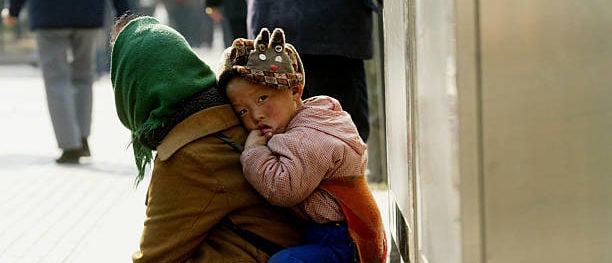China’s services sector is buckling under U.S. tariffs, with new data showing a dramatic slowdown in April — the latest sign that President Donald Trump’s trade war is hitting Beijing on all fronts.
The Caixin China services purchasing managers’ index (PMI), a key indicator of activity in China’s services industry, dropped to its lowest level in seven months, barely staying above the threshold that separates growth from contraction, according to Bloomberg. A sub-index used to predict future economic activity fell to the second-lowest level recorded since the data began being collected.
The only time this sub-index has been lower was in February 2020 at the height of the COVID-19 pandemic.
“Service providers expressed concerns over the effects of U.S. tariffs,” Wang Zhe, senior economist at Caixin Insight Group, said in a recent report. “With a cloud over the market outlook, both business and consumer confidence are subdued, making it harder to boost domestic demand. The ripple effects of the ongoing China-U.S. tariff standoff will gradually be felt in the second and third quarters.”
Chinese beggars wait for money in Shanghai. (Photo by China Photos/Getty Images)
The chill gripping China’s services industry follows a broader collapse across key sectors of the country’s economy. Financial institutions are in steep decline, with the country’s six largest banks reporting combined first-quarter losses of more than $1 billion, The Epoch Times reported. The construction industry also fell short of market expectations in April, but manufacturing has taken the hardest blow. New export orders dropped to their lowest point since December 2022, and cargo shipments to the U.S. have plunged by 60%.
With more than 16 million Chinese workers tied to export-driven manufacturing, the fallout is spreading fast. Thousands of workers have walked off job sites and taken to the streets in recent weeks to protest unpaid wages, and some have even threatened suicide.
The latest batch of data shows the “trade war is weighing on economic activity in China,” Zichun Huang, an economist at Capital Economics, told the Wall Street Journal.
While Chinese officials insist they’re on track to hit a 5% GDP growth target, analysts surveyed by Bloomberg predict the economy will only grow by 4.2% this year. In reality, the economic toll of the tariffs on China’s economy might be much worse. (RELATED: American Manufacturers Overwhelmed With Orders After Trump’s Tariff Crackdown On China)
Chinese authorities have stopped publishing a wide range of key indicators in recent years, including data on land sales, unemployment, and foreign investment. A Wall Street Journal analysis found that hundreds of previously available metrics have quietly disappeared. In most cases, no explanation was given.
Last year, even before the tariffs went into effect, Gao Shanwen, a well-known Chinese economist, said publicly that China’s economic growth was much lower than what the Chinese Communist Party claimed.
CCP General Secretary and Chinese President Xi Jinping ordered that Gao be disciplined and the economist has not spoken publicly since, according to the Journal.
All content created by the Daily Caller News Foundation, an independent and nonpartisan newswire service, is available without charge to any legitimate news publisher that can provide a large audience. All republished articles must include our logo, our reporter’s byline and their DCNF affiliation. For any questions about our guidelines or partnering with us, please contact licensing@dailycallernewsfoundation.org.


